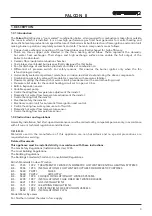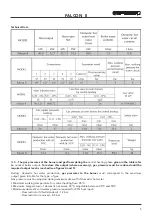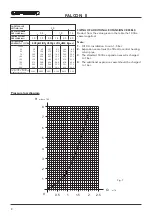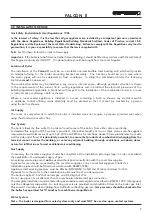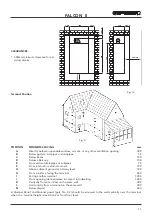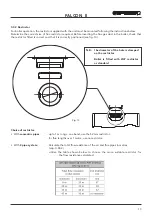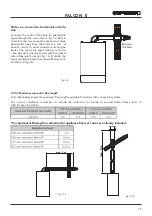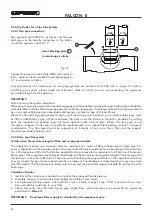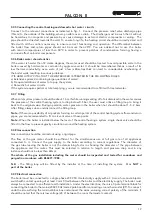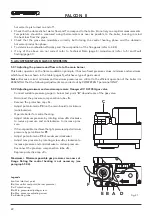
FALCON II
10
Central Heating
Detailed recommendations are given in BS6798, BS5449, BS6700 and CP342 Part 2. Pipework not forming part
of the useful heating suface should be insulated to prevent any heat losses or possible freezing (i.e. in roof spaces
or ventilated underfloor spaces). Drain taps should be positioned at the lowest point of the system in accessible
locations to permit the whole system to be drained down. The drain taps should be in accordance with
BS2879. Copper tubing to BS2871, Part 1 is recommended for water carrying pipework. Pipework in
horizontal runs should have a gradient where possible to facilitate the removal of air. Ensure that the
boiler heat exchanger is not a natural point for air collection. A typical heating system with domestic
hot water circuit is illustrated in fig. 8.
Important
- If thermostatic radiator vales are fitted
a bypass must be fi tted to ensure a minimum fl ow rate through
the boiler of 6 l/min
. The bypass should be fitted as far as possible from the boiler.
Make Up Water
Provision must be made for replacing water lost from the sealed system. Reference should be made to BS6798,
for methods of filling and making up sealed systems. There must be no direct connection between the boiler's
central heating system and the mains water supply. The use of mains water to charge and pressurise the system
directly, is conditional upon the Local Water Byelaws. Again any such connection must be disconnected after use.
A typical temporary filling loop is shown in fig. 9.
Domestic Hot Water
Always fit a scale reducer in "hard water areas" (18 clarke degrees or over)". A 15mm copper connection point on
the boiler for attaching to the main supply is provided. The maximum domestic water pressure for the
inlet supply is 10 bar (145 P.S.I.).
If the cold mains supply exceeds 5 bar (72 P.S.I.), a water governor
or pressure reducing valve must be fi tted
by the installer into the mains supply in an inconspicuous but
accessible position preferable between 3 and 5 metres (10-16ft) before the appliance. Such a valve must be
approved by the Water Research Council.
Attention -
is drawn to the Model Water Byelaws.
Fittings manufactured from duplex (alpha-beta) brass
are not acceptable for underground use and certain
water undertakings will not accept their use above
ground.
Ensure all pipework is adequately supported
NOTE:
A bypass must be fitted as far as possible
from the boiler if thermostatic radiator valves are
fitted thoughout.
Fig. 8
Gas
Cold water
Additional expansion
vessel C.H. (if required)
Filling
point C.H.
Bypass
Key
1.
Filling point C.H.
2.
Temporary connection
3.
Cold water supply
Fig. 9



